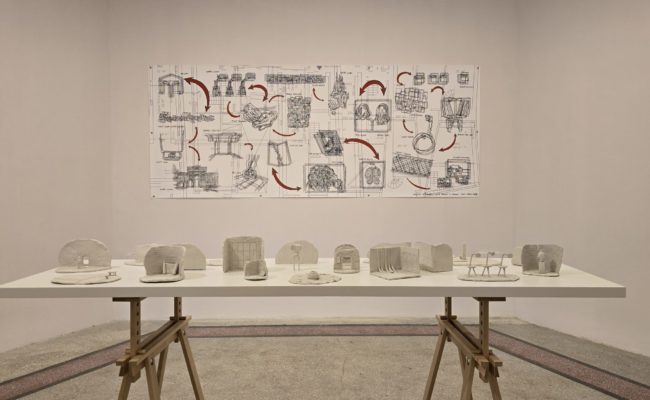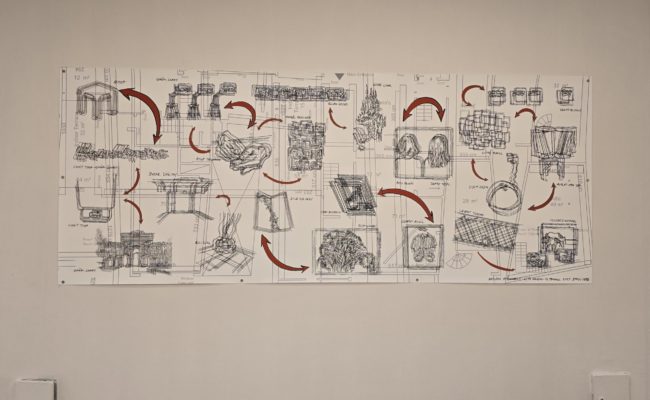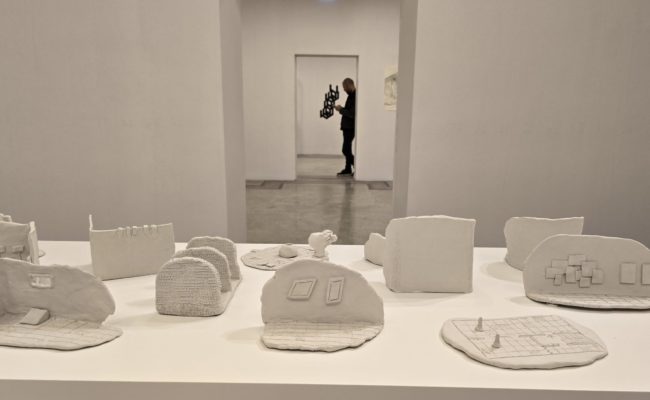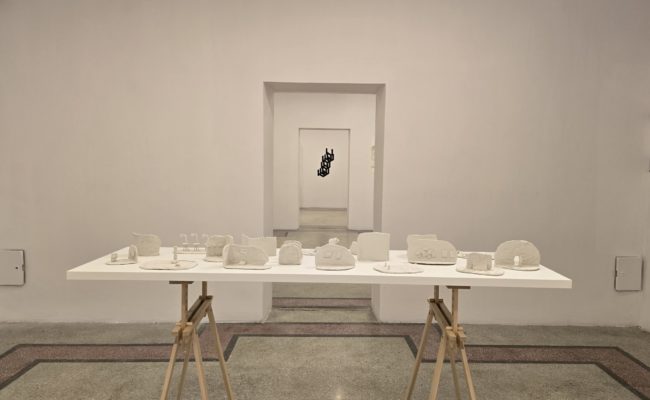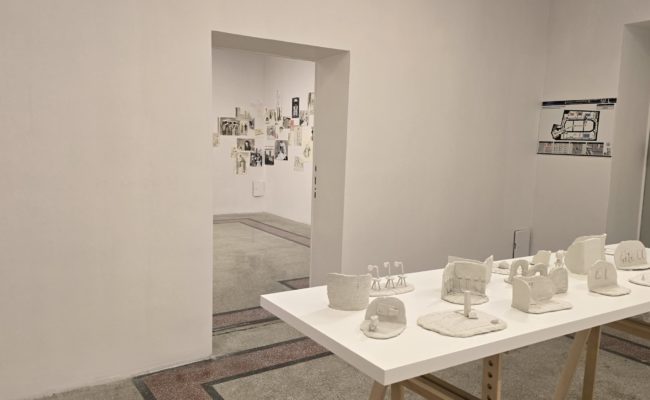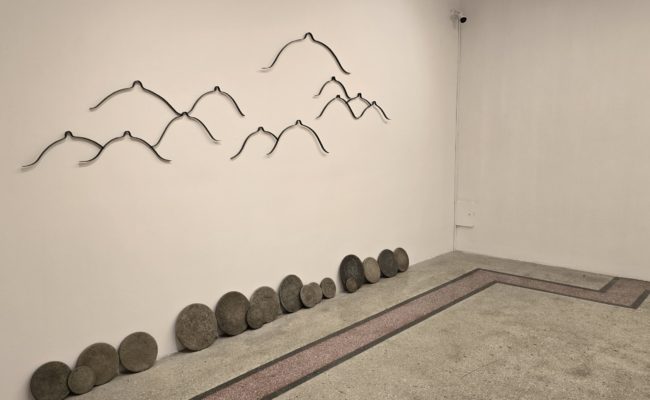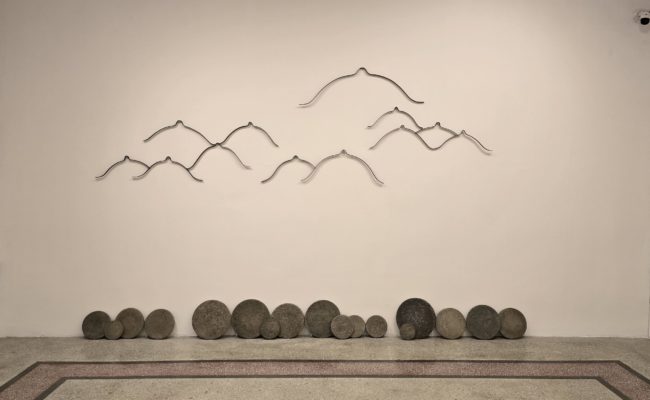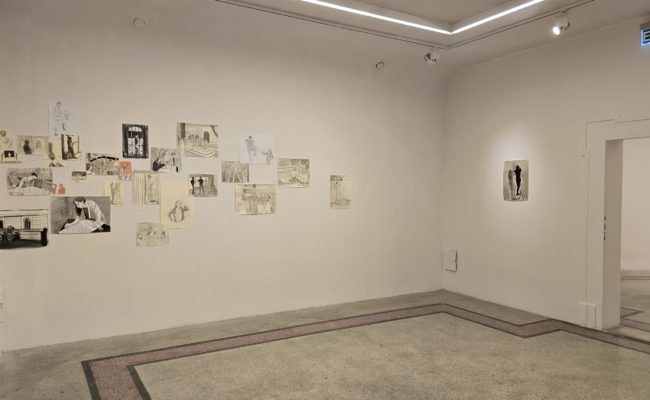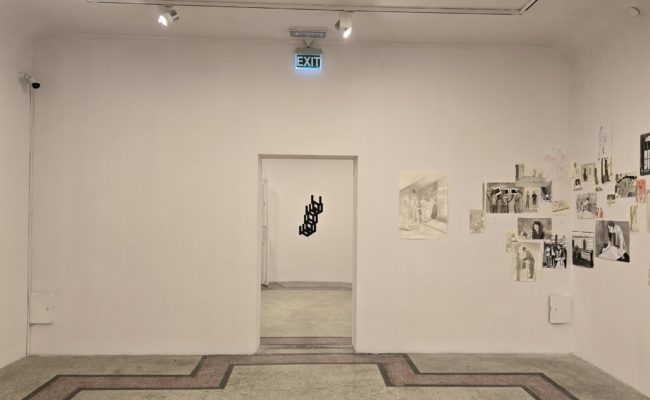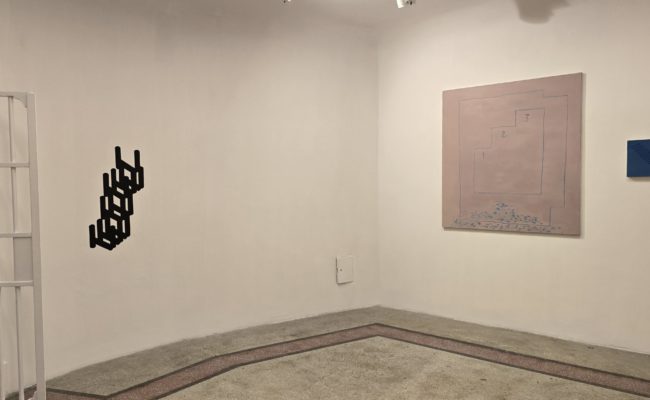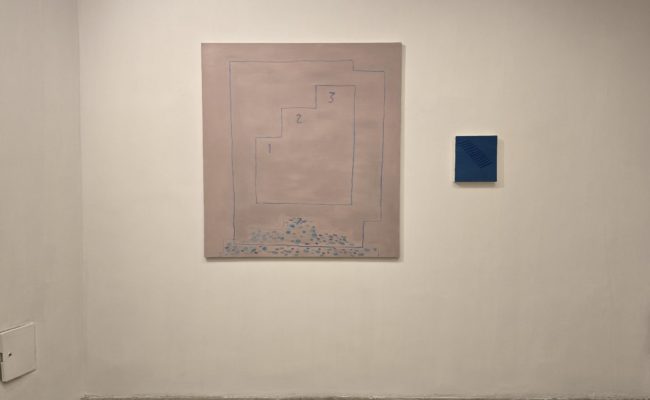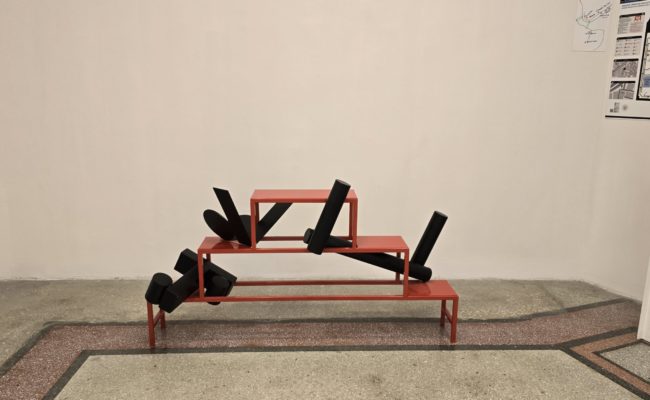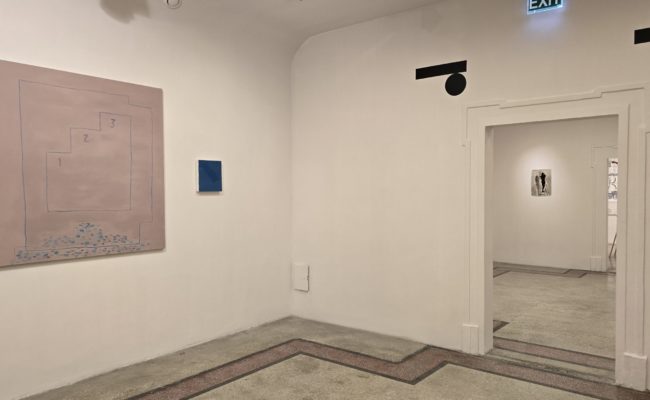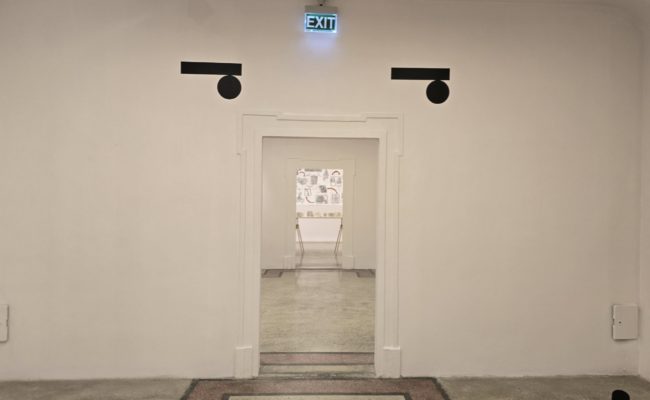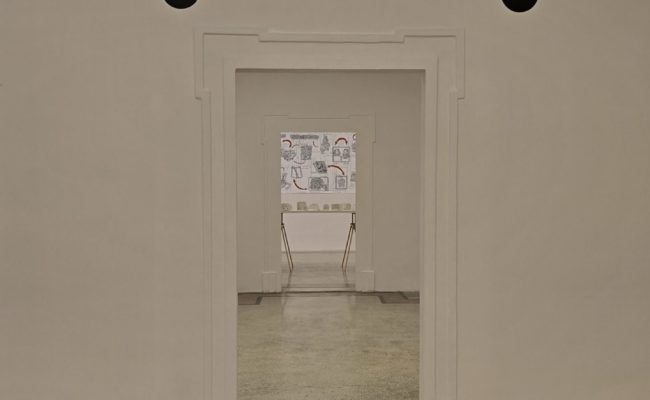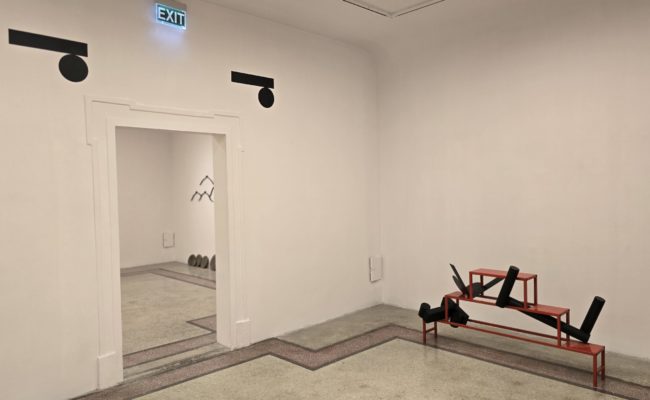The artist initiative Atış Serbest meets its audience in autumn 2025 with a dual exhibition across two different venues: “Mâlûmat (Cognisance)”, on view at Kasa Gallery between September 26 – November 2, 2025, and “Müdavim (Regulars)”, comprising installations and artistic interventions at Karaköy Olimpiyat. Shaped in reference to Atış Serbest’s 13-year history, this program brings together both collective modes of production and exhibition strategies based on the use of alternative spaces.
“Müdavim (Regulars)” on the other hand, unfolds at Olimpiyat, one of Karaköy Istanbul’s iconic venues where artists have gathered for over two decades. The exhibition highlights the connections built through the idea of being a “regular” at this social space, transforming the memory of the Olimpiyat Restaurant’s beer hall into a collective experience through artistic interventions by 57 artists, including: Sevgi Aka, Murat Akagündüz, Ahu Akgün, Şule Nur Alev, Zeycan Alkış, Evrim Altuğ, Levent Aygül, Can Aytekin, Emir Barın, Burçin Başar, Emel Başarık, Şahin Bayraktar, Selim Birsel, Antonio Cosentino, Başak Çalışır, Elif Çelebi, Fulya Çetin & Can Ünlü, Sevde Diker, Burak Dikilitaş, Tuğçe Diri, Elvan Ekren, Ece Eldek, Nermin Er, Eda Gecikmez, Ekin Kano, Gizem Karakaş, Evrim Kavcar, Hakan Bilal Karakaya, Volkan Kızıltunç, Melisa King, Çağla Köseoğulları, Buse Kökçü, Sinan Logie, Seyhan Musaoğlu, Can Özal, Erhan Özışıklı, Yasemin Özcan, Emir Özer, Ekin Saçlıoğlu, İlhan Sayın, Çağrı Saray, Yusuf Sevinçli, Peri Sharpe, Şevket Sönmez, Etem Şahin, Ayça Telgeren, Defne Tesal, Levent Türkan, Gizem Ünlü, Merve Vural, Sevgi Yanar, Atalay Yeni, Nalan Yırtmaç, MK Yurttaş and Derya Yücel.
The exhibition “Mâlûmat (Cognisance)”gathers new works by Ahu Akgün, Ayça Telgeren, Can Aytekin, Çağrı Saray, Defne Tesal, and Levent Aygül, each reflecting on the past of Atış Serbest. Presented at Kasa Gallery, this section traces the modes of engagement the artists have developed with the initiative over the years.
In this exhibition, Can Aytekin recontextualizes elements from art history by merging Hattat Râkım’s “camel neck” calligraphic belts from the Nusretiye Mosque with the distinct logo of the “d Group” (The d Group was a collective of pioneering painters founded in 1933 that introduced modern art to Turkey). The Nusretiye Mosque itself stands directly opposite the Tophane-i Amire building, creating a direct visual and historical link. The work also incorporates objects gathered from the Ticaret Han and Doğu Bank route-previous Atış Serbest venues—connecting Tophane-i Amire and Barın Han by merging them with forms derived from the d group’s emblem. True to his personal artistic practice, Levent Aygül articulates his works through the following keywords: blue, poster, two. Ahu Akgün delves into the Atış Serbest archive, shifting focus from the final exhibitions to the behind-the-scenes processes. As an artist collective, Atış Serbest illuminates the stages of design, collaborative assembly, and installation inherent in its exhibitions, fostering a sense of solidarity. Akgün connects the materials utilized, such as paper, ink, and pen, with the emotional resonance of these activities, suggesting ease and harmony that mirror the collective's ability to act. Ayça Telgeren transports the venues that hosted the exhibition series into Kasa Gallery by flattening the iconic forms these spaces represent. The artist reduces the bronze cannons at the entrance of Tophane and the lead domes of the Kılıç Ali Paşa Mosque, located directly behind it, to a two-dimensional plane. Telgeren also brings to light the overlooked architectural elements of these spaces. The Hermes sculpture on the façade of Minerva Han and the owl at its entrance, symbolizing the fine arts in mythology, along with the original Marley floor tiles of Barın Han, are all brought together in the entrance of Kasa Gallery. Defne Tesal shapes her work from fragmented memories of past Atış Serbest exhibitions, recalling them in a manner akin to the natural processes of human memory. Her three-dimensional, unscaled, and fluid works focus on the emotions the original pieces evoked in her. They are modeled with an approach that suggests reality without directly mirroring it. Çağrı Saray renders a topography of the 2021 Mecmu exhibition, centering Atış Serbest's relational and production methodologies. Drawing from the Situationist International's concept of psychogeography—a core element of his artistic practice—Saray employs a unique mapping method as a significant artistic tool. He endeavors to mentally reconstruct the exhibition based on his recollections. The floor plans of Barın Han, where the exhibition was held, form the map's underlying layer, charting routes of movement and interaction within the space.
Additionally, the wall installation at the gallery's entrance unveils the modest archive of past Atış Serbest exhibitions.
About Atış Serbest
Initiated in 2012 by Can Aytekin and Levent Aygül, Atış Serbest is a series of exhibitions born out of Mimar Sinan Fine Arts University. Emerging from a desire to create alternative exhibition spaces and to gather independently of the dominant curatorial discourse of its time, the initiative’s name was chosen as a humorous reference to the historical function and spontaneous nature of Tophane-i Amire. Over the years, exhibitions held in venues such as Tophane-i Amire Cistern Galleries and Barın Han have treated the idea of “coming together” not as a fixed definition but as an act in itself. With the MECMU exhibition in 2021, the formal diversity tied to site expanded further, embracing multi-layered and fragmented structures through experimental presentations. This year’s simultaneous exhibitions, Mâlûmat and Müdavim, are positioned both as a look back at the history of Atış Serbest and as contemporary reflections of new forms of collective production.

















